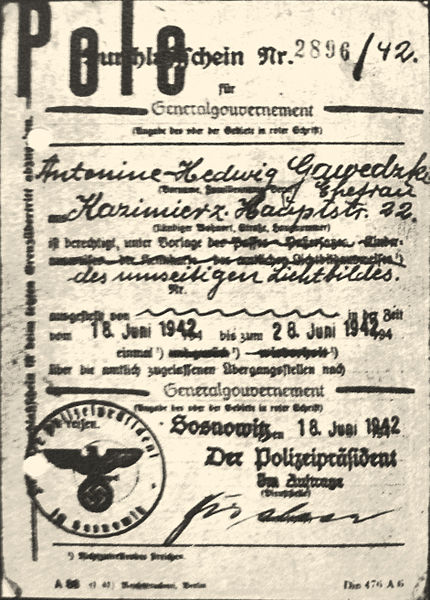Expulsion of Poles by Germany
The expulsion of Poles by Germany was a prolonged anti-Polish campaign of ethnic cleansing by violent and terror-inspiring means lasting nearly half a century. It began with the concept of Pan-Germanism developed in the early 19th century and culminated in the racial policy of Nazi Germany that asserted the superiority of the Aryan race. The removal of Poles by Germany stemmed from historic ideas of expansionist nationalism. It was implemented at different levels and different stages by successive German governments. It ended with the defeat of Nazi Germany in 1945.
Expulsion of Poles from Reichsgau Wartheland following the Invasion of Poland (1939). Families led to the trains under German escort, as part of Nazi German ethnic cleansing of annexed Poland.
Plaque commemorating the expulsion of 50,000 Polish citizens of Gdynia during the German "aktion Gotenhafen" in World War II
Expulsion of 280,606 Poles from Reichsgau Wartheland annexed to the Reich
Expulsion Warrant from Sosnowiec 1942 with stamp Pole.
Polish areas annexed by Nazi Germany
Following the Invasion of Poland at the beginning of World War II, nearly a quarter of the entire territory of the Second Polish Republic was annexed by Nazi Germany and placed directly under the German civil administration. The rest of Nazi-occupied Poland was renamed as the General Government district. The annexation was part of the "fourth partition of Poland" by Nazi Germany and the Soviet Union, outlined months before the invasion, in the Molotov–Ribbentrop Pact.
Arthur Greiser in German occupied Poznań, 2 October 1939
Photo from Nazi-occupied Łódź just after its renaming as "Litzmannstadt" (1940). A board announcing a new name for a city.
Expulsion of Polish civilians, autumn 1939
Ghettoization of Jews, Litzmannstadt 1941







